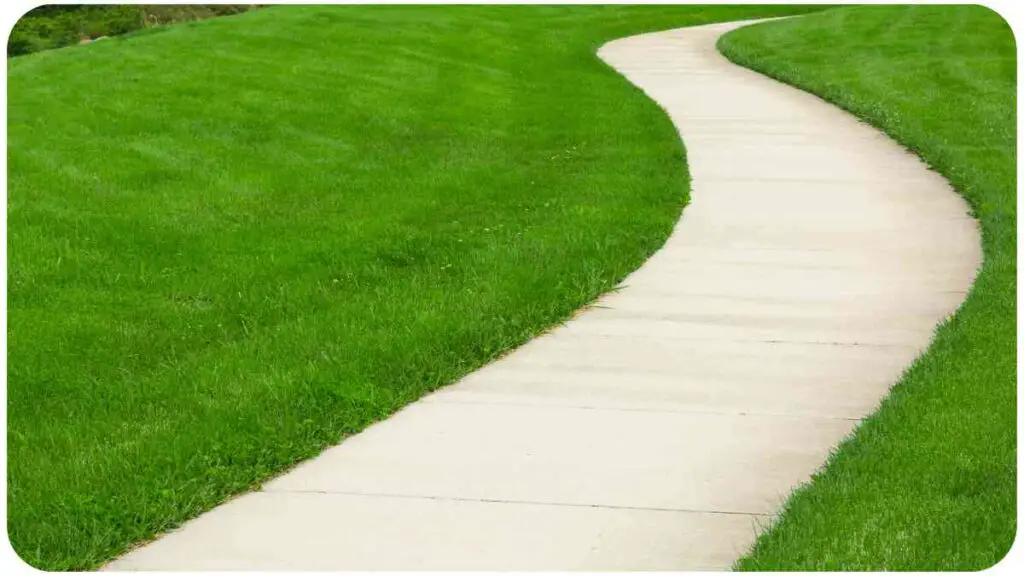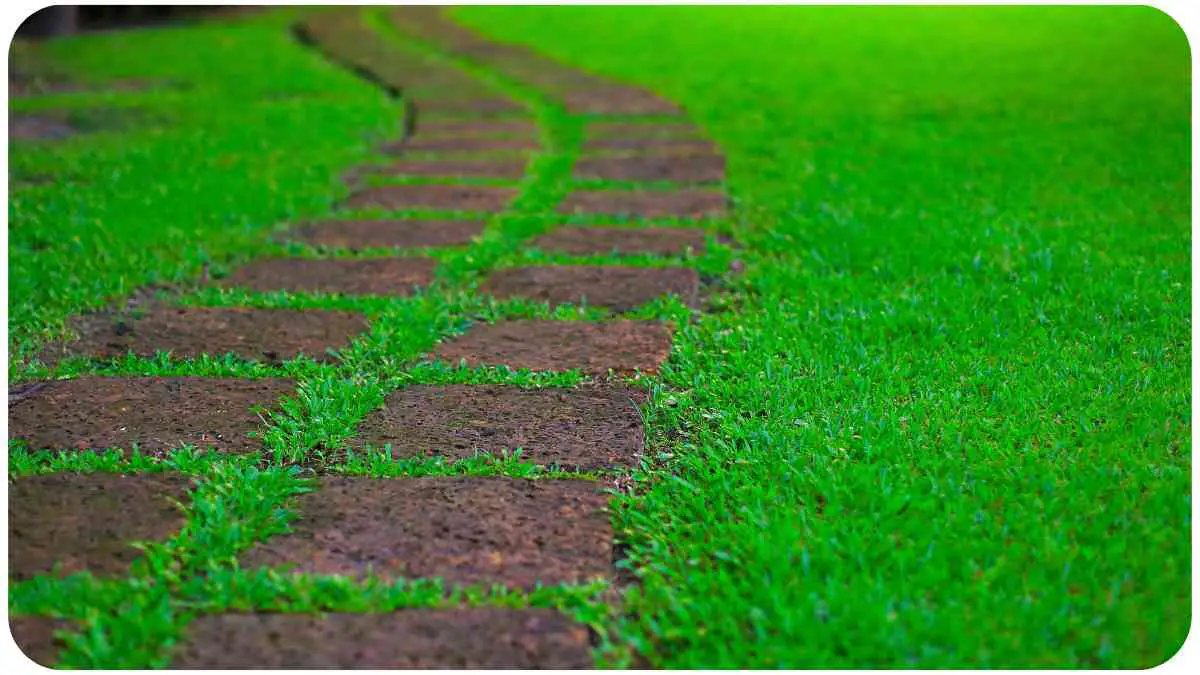Welcome to our comprehensive guide on resolving stone pathway shifts and sinking issues. If you’ve noticed your once-pristine pathway becoming uneven or sinking in certain areas, you’re not alone.
In this guide, we’ll explore the causes behind these problems, equip you with the necessary tools, and provide step-by-step solutions for both DIY enthusiasts and those considering professional help.
| Takeaway |
|---|
| Understanding the causes, such as soil erosion and poor foundation, is crucial for effective repairs. |
| Regular inspections and proactive maintenance help catch issues early, preventing extensive damage. |
| Selecting the right stones and using quality materials are essential for both aesthetic appeal and durability. |
| DIY repairs are feasible for those with basic skills, while professional help ensures swift, effective solutions. |
| Learn from expert tips and real-life success stories to enhance your pathway repair strategies. |
2. Understanding the Causes of Stone Pathway Issues

2.1 Soil Erosion
Table: Types of Soil Erosion and Impact on Pathways
Addressing comprehensive guide to outdoor fixes, this comprehensive guide offers valuable insights into resolving issues with a leaking garden hose connection. Implementing these tips ensures a well-maintained outdoor space.
| Soil Erosion Type | Pathway Impact |
|---|---|
| Sheet Erosion | Uneven surface |
| Gully Erosion | Deep crevices |
Soil erosion is a common culprit behind pathway issues. Different types of erosion can impact your pathway differently. Understanding these variations is crucial for effective resolution.
2.2 Poor Foundation
Table: Signs of a Weak Foundation
| Issue | Indication |
|---|---|
| Uneven Stones | Lack of stability and alignment |
| Visible Gaps between Stones | Insufficient foundation support |
A weak foundation can lead to shifts and sinking problems in stone pathways. Recognizing the signs early on helps in targeted repairs.
3. Assessing the Damage
3.1 Identifying Shifts
Table: Checklist for Identifying Pathway Shifts
| Observation | Possible Cause |
|---|---|
| Stones Misalignment | Soil erosion or inadequate base |
| Uneven Surface | Gully erosion or foundation issues |
Spotting shifts in your pathway is the first step towards resolution. This checklist helps you identify the possible causes.
Discover a step-by-step approach to repairing cracks in your patio. This guide provides practical insights, assisting you in effectively addressing cracks and maintaining a flawless outdoor space.
3.2 Recognizing Sinking Problems
Table: Signs of Pathway Sinking
| Observation | Potential Issue |
|---|---|
| Depressions in the Pathway | Soil settling or foundation weakness |
| Stones Sunken Below Surface | Inadequate base material or poor compaction |
Understanding the signs of sinking issues ensures a thorough assessment of the damage.
4. Tools and Materials You’ll Need
4.1 Basic Toolkit
Table: Essential Tools for Stone Pathway Repair
| Tool | Purpose |
|---|---|
| Rubber Mallet | Stone alignment and leveling |
| Shovel | Soil excavation and leveling |
| Level | Ensuring evenness of stones |
| Wheelbarrow | Transporting materials |
A basic toolkit is the foundation of any successful stone pathway repair project.
4.2 Specialized Equipment
Table: Advanced Equipment for Professional Repairs
| Equipment | Application |
|---|---|
| Plate Compactor | Compacting base material for stability |
| Concrete Mixer | Preparing a strong foundation mix |
| Laser Level | Ensuring precise alignment during repairs |
Professional repairs may require specialized equipment to achieve optimal results.
5. Step-by-Step Guide to Resolving Shifts

5.1 Clearing the Pathway
Table: Steps for Clearing the Pathway
| Step | Action |
|---|---|
| Step 1 | Remove any loose stones or debris |
| Step 2 | Use a shovel to excavate the topsoil |
| Step 3 | Inspect the base for signs of weakness |
Before addressing shifts, it’s essential to clear the pathway of any impediments. Follow these steps for a clean slate.
Explore effective tips and tricks for dealing with pests in your garden. This comprehensive resource empowers you to protect your outdoor environment and enhance the overall health of your garden.
5.2 Addressing Soil Issues
Table: Soil Amendments for Pathway Stability
| Soil Amendment | Purpose |
|---|---|
| Gravel | Improved drainage and stability |
| Sand | Enhanced compaction and support |
| Topsoil | Nutrient-rich layer for healthy vegetation |
Amending the soil provides a stable foundation for your pathway. Choose the right soil components based on your specific needs.
5.3 Realigning Stones
Table: Techniques for Stone Realignment
| Technique | Description |
|---|---|
| Rubber Mallet | Gently tap misaligned stones into the desired position |
| Shifting and Rotating | Adjust stones to create a visually pleasing pattern |
| Checking Alignment Periodically | Ensure evenness with a level during realignment |
Efficient stone realignment requires careful techniques and periodic checks to achieve a visually pleasing and stable pathway.
Delve into common issues and effective fixes for enhancing garden drainage. This valuable guide provides insights into optimizing drainage systems, ensuring the longevity and stability of outdoor features like stone pathways.
6. Solving Sinking Problems
6.1 Lifting and Leveling Techniques
Table: Methods for Lifting and Leveling Stones
| Method | Application |
|---|---|
| Adding Base Material | Lift sunken stones by adding and compacting base material |
| Using Polymeric Sand | Fill gaps between stones for stability and prevention of sinking |
| Adjusting Foundation | Reinforce the foundation to prevent future sinking |
Lifting and leveling sinking stones involve strategic methods to restore pathway integrity effectively.
6.2 Reinforcing the Foundation
Table: Foundation Reinforcement Options
| Reinforcement Method | Purpose |
|---|---|
| Installing Geotextile Fabric | Prevents soil erosion and stabilizes the foundation |
| Pouring Concrete Footers | Adds a strong, durable base for long-term stability |
| Using Paver Base Panels | Distributes weight and minimizes foundation settling |
A reinforced foundation is key to preventing future sinking issues. Explore these methods to fortify your pathway’s base.
7. Preventive Measures for Future Stability
7.1 Proper Base Installation
Table: Components of a Robust Pathway Base
| Base Component | Role in Ensuring Stability |
|---|---|
| Gravel Base | Provides drainage and prevents soil compaction |
| Sand Layer | Enhances compaction and supports stone leveling |
| Geotextile Fabric | Prevents weed growth and stabilizes the base |
A well-constructed base is fundamental to the longevity of your stone pathway. Ensure proper installation for lasting stability.
7.2 Choosing the Right Stones
Table: Stone Selection Considerations
| Stone Type | Characteristics to Consider |
|---|---|
| Durable Materials | Resistant to weathering and wear |
| Uniform Thickness | Ensures evenness during installation |
| Textured Surfaces | Provides traction and minimizes slipping |
Selecting the right stones is crucial for both aesthetic appeal and long-term durability. Consider these factors when making your choice.
Achieve a smooth lawn by fixing uneven grass steps. This step-by-step guide offers practical solutions for maintaining an even outdoor surface, complementing your efforts in resolving issues with stone pathways.
7.3 Regular Maintenance
Table: Maintenance Tasks for Stone Pathways
| Maintenance Activity | Frequency |
|---|---|
| Weed Removal | Monthly |
| Realigning Stones | Seasonal |
| Inspecting Foundation | Annually |
Regular maintenance is the key to preventing future issues. Stay proactive with these routine tasks to ensure your pathway remains stable.
8. Expert Tips and Insights
8.1 Advice from Landscaping Professionals
Table: Tips from Landscaping Experts
| Expert | Tip |
|---|---|
| Sarah Green, Landscaper | “Choose stones with interlocking features for added stability.” |
| John Miller, Hardscape Specialist | “Compact the base material in layers to ensure uniform support.” |
Learn from the experts. These insights from professionals can guide you in making informed decisions during your pathway repair.
8.2 Success Stories in Stone Pathway Repair
Table: Real-Life Success Stories
| Homeowner | Challenge | Solution |
|---|---|---|
| Lisa Thompson | Severe pathway shifts and sinking | Professional lifting and realignment |
| Michael Rodriguez | Sinking stones due to weak foundation | DIY reinforcement with concrete footers |
Real-world success stories provide inspiration and showcase effective solutions. Explore how others have tackled similar pathway issues.
9. Common Mistakes to Avoid

9.1 Neglecting Small Shifts
Table: Risks of Neglecting Small Shifts
| Neglected Issue | Potential Consequence |
|---|---|
| Misaligned Stones | Uneven pathway surface |
| Minor Sinking | Escalation to major structural issues |
Ignoring minor shifts can lead to more significant problems over time. Addressing issues early prevents further damage.
9.2 Using Inadequate Materials
Table: Consequences of Inadequate Materials
| Inadequate Material | Potential Outcome |
|---|---|
| Weak Foundation Mix | Increased susceptibility to sinking |
| Thin or Unstable Base Layer | Pathway instability and unevenness |
Choosing subpar materials can compromise the effectiveness of repairs. Invest in quality materials for lasting results.
10. FAQs on Stone Pathway Issues
10.1 Can I Fix It Myself?
Table: DIY Suitability Checklist
| Criteria | DIY Suitability |
|---|---|
| Level of Expertise | Basic knowledge of landscaping and construction |
| Availability of Tools | Access to essential toolkit and equipment |
| Time Commitment | Willingness to invest time in the repair process |
Evaluate your readiness before embarking on a DIY repair project. Certain factors determine whether it’s a feasible undertaking.
10.2 How Often Should I Check My Pathway?
Table: Recommended Inspection Frequency
| Pathway Age | Inspection Frequency |
|---|---|
| Newly Installed | Monthly |
| 1-3 Years Old | Seasonal |
| Over 5 Years Old | Annual |
Regular inspections help identify issues early on. The frequency of checks depends on the age of your stone pathway.
11. Cost Estimates for Professional Repairs
Table: Average Cost Estimates for Professional Stone Pathway Repairs
| Repair Type | Cost Range |
|---|---|
| Soil Erosion Correction | $500 – $1,500 |
| Foundation Reinforcement | $1,000 – $3,000 |
| Full Pathway Realignment | $2,000 – $5,000 |
Understanding the potential costs involved in professional repairs helps you budget effectively.
12. DIY vs. Professional Help
Table: Decision-Making Factors
| Consideration | DIY Repair | Professional Help |
|---|---|---|
| Skill Level | Basic to Intermediate | Advanced |
| Time Availability | Requires dedicated time | Swift resolution with minimal personal time |
| Cost | Lower upfront costs | Higher initial investment, potentially cost-effective in the long run |
Evaluate your circumstances and preferences to decide whether a DIY approach or professional assistance is more suitable for your stone pathway repair.
13. Conclusion
In conclusion, resolving stone pathway shifts and sinking issues requires a systematic approach, whether you choose a DIY route or seek professional help. By understanding the causes, assessing the damage, and implementing effective solutions, you can restore your pathway’s stability and enhance its longevity.
Remember to regularly inspect and maintain your stone pathway to catch potential issues early on. Choosing the right materials, following expert advice, and avoiding common mistakes are key components of successful pathway management.
Whether you’re a seasoned DIY enthusiast or prefer the expertise of professionals, this comprehensive guide provides you with the knowledge and tools to tackle stone pathway issues head-on. By combining practical insights with real-world examples, we aim to empower you to create a beautiful, stable, and long-lasting stone pathway.
Further Reading
- Fixing a Walkway with Sinking Stones: This article provides practical insights into addressing sinking stones in walkways. Learn from real-life experiences and discover effective DIY solutions.
- 5 Paver Patio Problems: Are These Common Issues Legitimate Concerns?: Explore common problems associated with paver patios and find out if these concerns are legitimate. Gain valuable tips on maintaining a durable and attractive outdoor space.
- Solutions for the Most Common Paver Problems: Uncover solutions to prevalent issues faced with paver installations. This resource offers expert advice on troubleshooting and preventing common problems for a long-lasting pathway.
FAQs
How can I assess if my stone pathway has sinking issues?
To identify sinking problems, look for depressions in the pathway, stones sunken below the surface, and uneven areas. Regular inspections will help catch these signs early.
Is it possible to fix a stone pathway myself?
DIY repair is feasible for those with basic landscaping and construction knowledge, access to essential tools, and a willingness to invest time in the repair process.
What materials should I avoid when repairing my stone pathway?
Using weak foundation mixes or thin, unstable base layers can compromise the stability of your pathway. Opt for quality materials to ensure lasting results.
How often should I inspect my stone pathway for issues?
The frequency of inspections depends on the age of your pathway. Monthly checks for newly installed pathways, seasonal inspections for 1-3 years old, and annual inspections for those over 5 years old are recommended.
What are the potential consequences of neglecting small shifts in my stone pathway?
Neglecting minor shifts can lead to an uneven pathway surface and may escalate to major structural issues over time. Addressing shifts early prevents further damage.

Hi! My name is Hellen James, and I’m here to help you with your home-maintenance needs. Whether it’s building a better yard or just trying to fix a garden—I can show you how.


